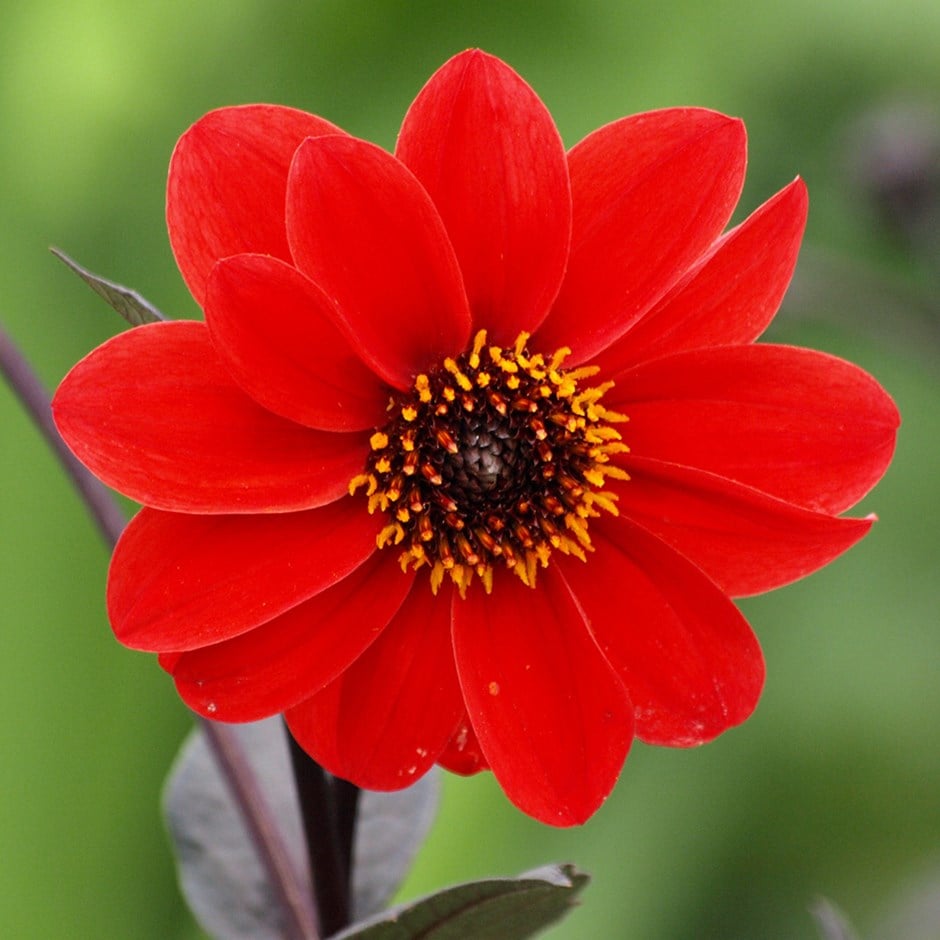Dahlia 'Bishop of Llandaff'
paeony-flowered dahlia
This perennial dies back to below ground level each year in autumn, then fresh new growth appears again in spring.
- Position: full sun
- Soil: fertile, humus-rich soil
- Rate of growth: average
- Flowering period: July to September
- Hardiness: half hardy (may need winter protection)
Striking, semi-double, bright vermilion-red flowers appear from July to September above the deeply divided, dark bronze-red leaves. This popular, peony-flowered dahlia requires a sunny site with fertile, humus-rich soil. Perfect for a planting scheme based on 'hot' colours, the tubers must be lifted and over-wintered in a frost-free place in all but the warmest areas. - Garden care: Dahlia tubers can be planted outside after frost, or started off in pots under glass in late winter to early spring. Plant them horizontally approximately 12cm deep, making sure the ‘eyes’ are uppermost. Allow enough room between each tuber so the plants can grow and spread to their full size without being overcrowded. While in growth, provide a high-nitrogen liquid feed each week in June, then a high-potash fertiliser each week from July to September. Stake with canes or brushwood if it becomes necessary. In mild areas, leave them in situ over winter, but protect the crown with a generous layer of dry mulch. In colder areas, carefully lift and clean the tubers once the first frosts have blackened the foliage and allow them to dry naturally indoors. Then place the dry tubers in a shallow tray, just covered with slightly moist potting compost, sand or vermiculite and store in a frost-free place until planting out again.
- Humans/Pets: Ornamental bulbs - not to be eaten

